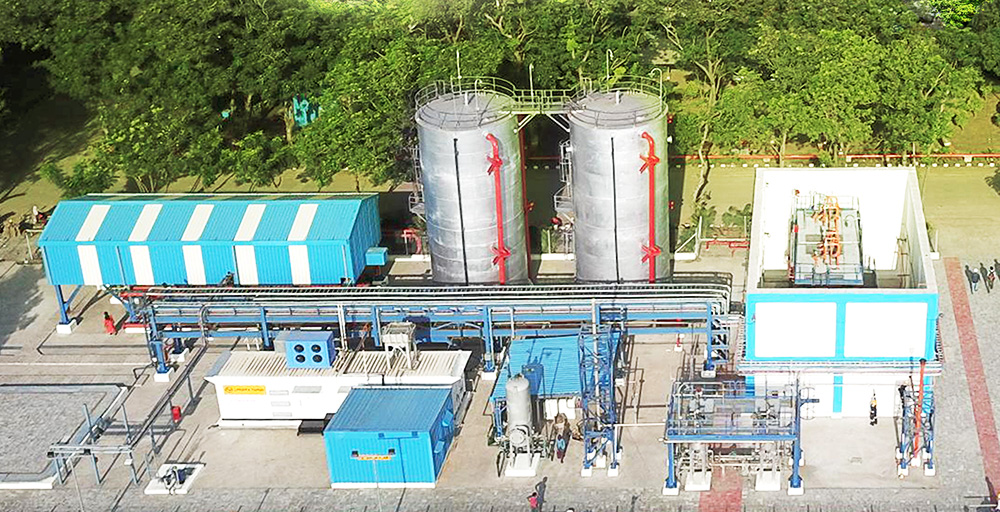The Automotive Industry's Pushback Against Mandatory Electric Vehicle Sales

Table of Contents
Economic Concerns and the Viability of Mandatory EV Sales
The economic viability of meeting aggressive mandatory electric vehicle sales targets is a major point of contention. Automakers face substantial economic challenges that cast doubt on the feasibility of immediate and widespread adoption.
High Manufacturing Costs and Reduced Profit Margins
Electric vehicles currently carry significantly higher production costs than their internal combustion engine (ICE) counterparts. This directly impacts profitability.
- Increased battery costs: Battery cells represent a substantial portion of an EV's cost, and current battery technology remains expensive.
- Specialized manufacturing processes: EV production requires specialized tooling and processes, increasing capital expenditure.
- Lower economies of scale: The current lower volume of EV production compared to ICE vehicles limits the potential for economies of scale, keeping costs high.
Data reveals a significant price difference between comparable EVs and ICE vehicles. While some EV models are becoming more competitive, many remain less profitable for manufacturers than equivalent ICE vehicles, making it difficult to meet ambitious sales targets without substantial government subsidies or a dramatic shift in consumer demand.
Consumer Demand and Market Readiness
The success of mandatory electric vehicle sales hinges on consumer acceptance and market readiness. Several factors currently hinder widespread EV adoption:
- Range anxiety: Concerns about limited driving range on a single charge remain a significant barrier.
- Charging infrastructure limitations: The lack of a sufficiently extensive and reliable charging network inhibits consumer confidence.
- Higher purchase prices: The higher upfront cost of EVs compared to ICE vehicles remains a considerable deterrent for many potential buyers.
Market research consistently shows that while EV adoption is increasing, a substantial portion of the population remains hesitant to transition, highlighting the gap between government mandates and consumer readiness.
Investment in Infrastructure and the Burden on Taxpayers
Meeting mandatory electric vehicle sales targets necessitates substantial investment in charging infrastructure, placing a significant financial burden on governments and taxpayers.
- Grid capacity upgrades: The increased electricity demand from widespread EV adoption requires significant upgrades to existing power grids.
- Widespread charging station deployment: The installation of a comprehensive network of public charging stations demands considerable investment.
- Government subsidies: Many governments rely heavily on subsidies and tax breaks to stimulate EV adoption, impacting public finances.
Countries like Norway, while leaders in EV adoption, illustrate the significant investments required to support widespread EV use. The cost of this infrastructure development, coupled with the need for grid modernization, raises concerns about the economic feasibility and fairness of solely relying on mandatory electric vehicle sales targets.
Technological Hurdles and the Feasibility of Immediate Transition
Technological limitations pose another significant challenge to the rapid transition to electric vehicles mandated by government regulations.
Battery Technology Limitations
Current battery technology significantly limits the widespread adoption of EVs.
- Energy density improvements: Improvements in battery energy density are crucial to increase driving range and reduce vehicle weight.
- Fast-charging technology advancements: Faster charging times are needed to alleviate range anxiety and improve convenience.
- Battery recycling challenges: Developing efficient and sustainable battery recycling processes is crucial to minimize environmental impact.
Ongoing research and development efforts aim to overcome these limitations, but significant breakthroughs are needed before battery technology fully supports the ambitious targets set by mandatory electric vehicle sales policies.
Supply Chain Constraints and Raw Material Availability
The production of electric vehicles relies on several critical raw materials, raising concerns about supply chain constraints and geopolitical risks.
- Lithium mining: Lithium, a key component of EV batteries, faces challenges related to extraction, processing, and environmental impact.
- Cobalt sourcing: Cobalt, another crucial battery material, is often sourced from regions with questionable labor practices and environmental regulations.
- Rare earth element dependence: The manufacturing of EVs relies on several rare earth elements, the supply of which is geographically concentrated and subject to geopolitical instability.
These supply chain vulnerabilities could lead to production bottlenecks, price volatility, and potential disruptions to the ambitious goals of mandatory electric vehicle sales policies.
Skilled Workforce Shortages
The transition to electric vehicles requires a skilled workforce capable of manufacturing, maintaining, and servicing these new vehicles.
- Training programs: Investment in comprehensive training programs is needed to equip workers with the skills required for EV production and maintenance.
- Workforce development initiatives: Targeted initiatives are essential to attract and retain talent in the rapidly evolving EV sector.
- Retraining existing automotive workers: Reskilling programs are crucial to adapt the existing automotive workforce to the demands of EV technology.
The lack of a sufficiently skilled workforce could hinder the smooth implementation of mandatory electric vehicle sales, potentially causing delays and cost overruns.
The Automotive Industry's Lobbying Efforts and Political Influence
Facing mandatory electric vehicle sales targets, the automotive industry has actively engaged in lobbying efforts and political influence campaigns.
Arguments Presented by Automakers
Automakers have presented various arguments against the rapid implementation of mandatory electric vehicle sales:
- Phased approach: They advocate for a gradual transition, arguing for a phased approach that allows for a more manageable shift to EVs.
- Market-driven transition: They emphasize the importance of a market-driven transition, allowing consumer demand to guide the pace of change.
- Technological readiness: They highlight the need for further technological advancements before widespread EV adoption is feasible.
- Infrastructure needs: They stress the importance of adequate charging infrastructure to support higher EV adoption rates.
These arguments emphasize the need for realistic and sustainable policies that acknowledge the existing challenges.
Collaboration vs. Confrontation
The automotive industry employs various strategies to influence policy decisions:
- Industry partnerships: Collaboration with governments and other stakeholders on developing supportive policies.
- Policy recommendations: Providing detailed policy recommendations based on industry expertise and economic analysis.
- Legal challenges: In some cases, resorting to legal challenges against overly ambitious mandates.
- Public awareness campaigns: Educating the public about the challenges and complexities of the EV transition.
The balance between collaboration and confrontation in these efforts shapes the ongoing debate surrounding mandatory electric vehicle sales.
Conclusion: Navigating the Future of Mandatory Electric Vehicle Sales
The automotive industry's pushback against mandatory electric vehicle sales stems from a combination of legitimate economic concerns, technological limitations, and infrastructural challenges. The transition to electric mobility is crucial for environmental sustainability, but a balanced approach that addresses both environmental goals and economic realities is essential. A rapid transition based solely on mandates risks significant economic disruption and may not achieve its intended environmental benefits. The debate around mandatory electric vehicle sales continues; understanding the key challenges is crucial for finding a viable path toward a greener future. What strategies can best ensure a smooth and sustainable transition to electric vehicles, mitigating the economic and technological hurdles while accelerating the shift to cleaner transportation?

Featured Posts
-
 China Market Headwinds Bmw Porsche And Other Automakers Face Difficulties
May 03, 2025
China Market Headwinds Bmw Porsche And Other Automakers Face Difficulties
May 03, 2025 -
 Is Labour Becoming The Nasty Party A Political Analysis
May 03, 2025
Is Labour Becoming The Nasty Party A Political Analysis
May 03, 2025 -
 Mwqe Bkra Akthr 30 Shkhsyt Mkrwht Fy Tarykh Krt Alqdm
May 03, 2025
Mwqe Bkra Akthr 30 Shkhsyt Mkrwht Fy Tarykh Krt Alqdm
May 03, 2025 -
 Addressing Ghanas Mental Health Crisis The Psychiatrist Shortage
May 03, 2025
Addressing Ghanas Mental Health Crisis The Psychiatrist Shortage
May 03, 2025 -
 Lion Storage Secures Funding For 1 4 G Wh Bess Project In Netherlands
May 03, 2025
Lion Storage Secures Funding For 1 4 G Wh Bess Project In Netherlands
May 03, 2025
